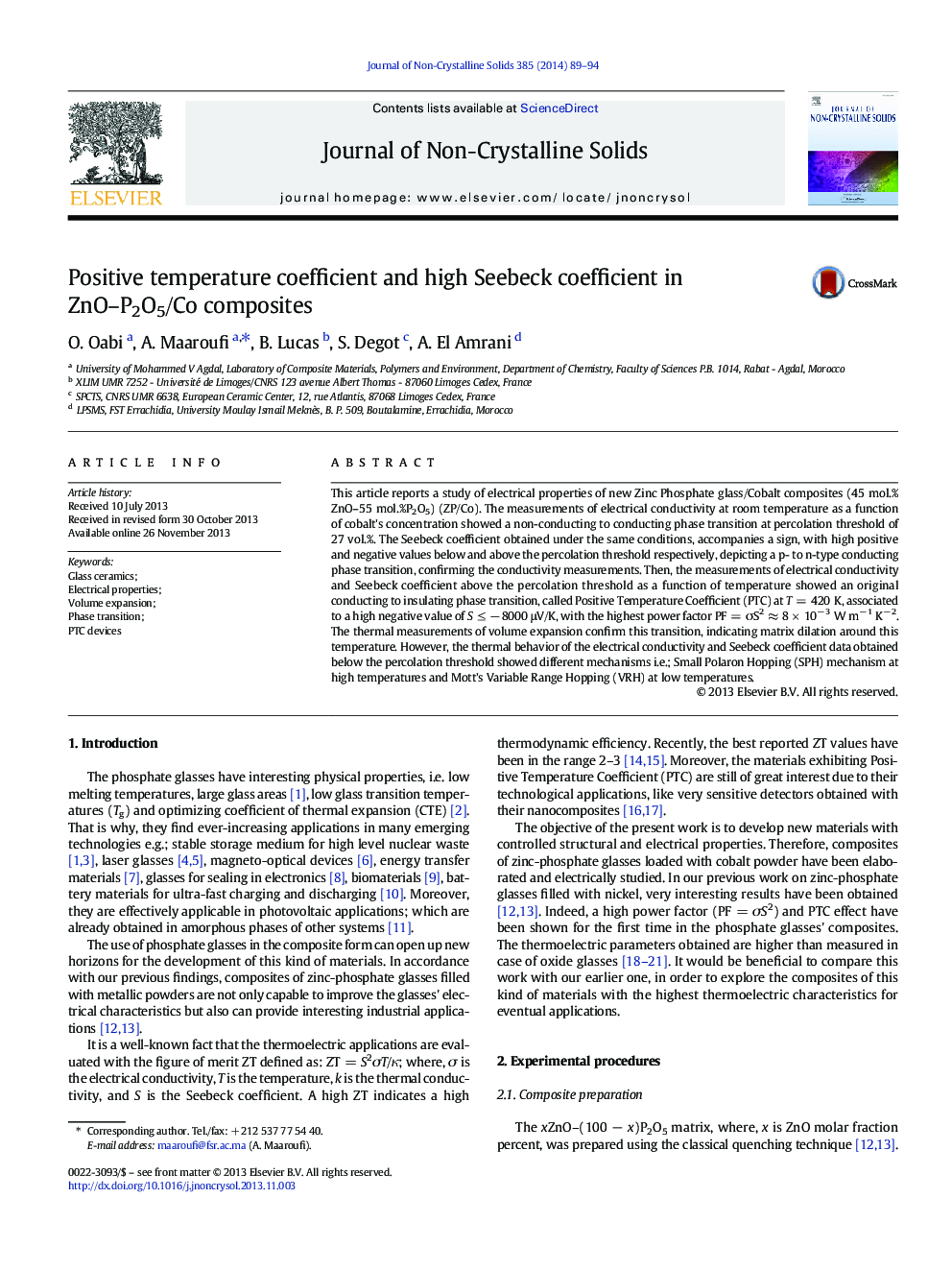| کد مقاله | کد نشریه | سال انتشار | مقاله انگلیسی | نسخه تمام متن |
|---|---|---|---|---|
| 1481141 | 1510453 | 2014 | 6 صفحه PDF | دانلود رایگان |

• New composites of ZnO–P2O5/metal were elaborated and electrically studied.
• New and original electrical behavior has been shown by changing filler fraction.
• Dielectric to conductor phase transition has been obtained by varying metallic filler content.
• High filler content allowed PTC transition, linked with large electrical power.
• Low filler content showed Small Polaron Hopping at high temperatures and Mott's Variable Range Hopping (VRH) at low temperatures conduction mechanisms.
This article reports a study of electrical properties of new Zinc Phosphate glass/Cobalt composites (45 mol.% ZnO–55 mol.%P2O5) (ZP/Co). The measurements of electrical conductivity at room temperature as a function of cobalt's concentration showed a non-conducting to conducting phase transition at percolation threshold of 27 vol.%. The Seebeck coefficient obtained under the same conditions, accompanies a sign, with high positive and negative values below and above the percolation threshold respectively, depicting a p- to n-type conducting phase transition, confirming the conductivity measurements. Then, the measurements of electrical conductivity and Seebeck coefficient above the percolation threshold as a function of temperature showed an original conducting to insulating phase transition, called Positive Temperature Coefficient (PTC) at T = 420 K, associated to a high negative value of S ≤ − 8000 μV/K, with the highest power factor PF = σS2 ≈ 8 × 10− 3 W m− 1 K− 2. The thermal measurements of volume expansion confirm this transition, indicating matrix dilation around this temperature. However, the thermal behavior of the electrical conductivity and Seebeck coefficient data obtained below the percolation threshold showed different mechanisms i.e.; Small Polaron Hopping (SPH) mechanism at high temperatures and Mott's Variable Range Hopping (VRH) at low temperatures.
Figure optionsDownload as PowerPoint slide
Journal: Journal of Non-Crystalline Solids - Volume 385, 1 February 2014, Pages 89–94